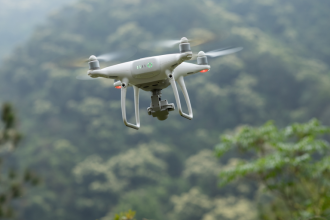In Brief
- A former voting machine auditor asserts U.S. election systems have yet to implement fundamental cryptographic safeguards against ballot tampering or duplication.
- He suggests incorporating end-to-end cryptographic proofs as an alternative to blockchain solutions to secure future elections and restore public confidence.
- Despite uncovering these vulnerabilities since 2006, the expert maintains vendors require legal pressure or updated election laws to implement necessary security measures.
Election Integrity Remains Vulnerable
Software engineer Michal Pospieszalski, who identified dangerous flaws in U.S. voting machines in 2006, states these security vulnerabilities persist nearly 16 years later. His analysis revealed a critical lack of cryptographic solutions that would allow election systems to detect ballot manipulation or duplication.
Vulnerabilities in Current Systems
While employed at the Election Science Institute as Chief Technology Officer, Pospieszalski examined voting systems for ES&S in 2006. He discovered “bad code practices, backdoors, and static passwords,” but most alarming was “the complete lack of end-to-end cryptographic proofs.”
“The biggest thing that wasn’t there was end-to-end cryptographic proofs,” Pospieszalski explained. “Meaning there’s no way the machine could know if a ballot was legitimate or if it had been counted multiple times.”
According to Pospieszalski, this flaw allows anyone with physical access to voting equipment to fraudulent multiply votes for specific candidates. “You could just run the same ballot through multiple times,” he stated.
Furthermore, the separation between ballot handling and voter record systems creates a reconciliation challenge. “There’s no anonymous serialization of each ballot… Each serialized ballot has to be counted only once,” explained the expert.
Cryptographic Solutions
Pospieszalski’s proposed solution draws from cryptographic techniques pioneered in the 1980s by David Chaum, whose work on digital cash introduced concepts that enable public verification without compromising voter anonymity.
“What you want is the machine gets a vote definition, and you have a Chaumian-blinded serialization on every ballot,” said Pospieszalski. The system would assign each ballot a unique identifier that could only be matched one time during the count.
Instead of the current approach that relies solely on digital tallies or paper backups, Pospieszalski recommends a three-pronged verification system:
- Paper ballots
- Digital count
- Cryptographic count
This system would provide parallel verification: “If the digital count says 100 votes, but the cryptographic count says only 90, now you know cheating occurred.”
Antrim County Example
Pospieszalski cited an experience from the 2020 Antrim County, Michigan, election that demonstrates the importance of such cryptographic safeguards. “There was a vote flip by roughly 2,000 votes,” he explained. “One day it was for Biden, the next for Trump. What really happened is the ballot definition was misconfigured.”
Rescanning the ballots confirmed the error was merely technical, but Pospieszalski emphasized, “The optics… fed public suspicion.” Cryptographic systems, he suggests, could prevent such confusion.
In his analysis, Pospieszalski also found evidence of possible ballot injection. “If you have 100 ballots with all 42 choices filled out identically, that’s suspicious,” he observed.
Political Will Required
Pospieszalski advocates for relatively simple software upgrades to current voting systems rather than blockchain implementations often proposed in election security debates. “All you’re trying to do is solve a simple problem: accurate vote counting,” he stated.
Voting machine manufacturers’ resistance to implementing these cryptographic safeguards stems from system inertia and commercial concerns. “They’re suggesting all sorts of really complicated schemes… likely to confuse both voters and election officials.”
According to Pospieszalski, legislative mandates or court orders would be necessary to compel these changes. “Voting manufacturers need pressure from state and local governments while they wait for manufacturers to respond positively,” he explained.
The solution must ultimately serve democratic integrity. “Extra complexity isn’t necessary,” Pospieszalski concluded. “If a law said by 2028 these systems must include this capability, we’d have a viable path forward.”












